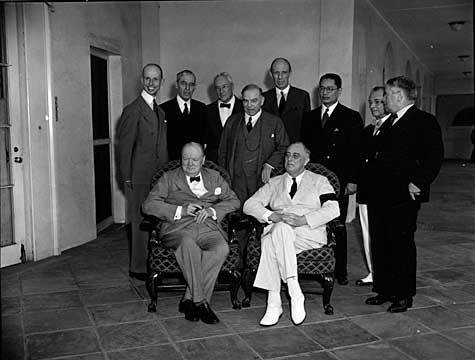Dec. 7 marks the 79th anniversary the day Pearl Harbor, a U.S. naval base near Honolulu, Hawaii, was attacked by Japanese forces, marking the entrance of the United States into World War II. To remember this day and World War II, the Cline Library Special Collections and Archives (SCA) at Northern Arizona University has a collection of documents and photographs connected to the time period President Franklin Delano Roosevelt served as U.S. president.
The SCA houses more than 700 collections at the university. It collects, preserves, makes available and engages the world with human and natural history of the Colorado Plateau and the history of NAU since its inception in 1899 as the Northern Arizona Normal School.
“We strive to be a laboratory where students, faculty and the general public can examine the past to help shape the future,” said Peter Runge, head of SCA. “We collect, preserve and make available historical primary source material, such as photographs, journals, diaries, correspondence, reports and oral histories for students, researchers, authors, filmmakers and the general public. In the university setting, we take the additional step of engaging our students and faculty with our content to support the university’s mission of developing our students’ research and critical thinking skills.”
One of the unique collections housed in SCA that connects to Pearl Harbor is Bill Belknap’s photographs. Belknap’s photos have contributed to the extensive history of the Colorado Plateau, but he started his career as a photographer in the Navy during World War II. He was briefly assigned to FDR’s detail and took several photographs of the president from 1942-1945.
“Bill Belknap is one of those people who happened to be in the right place at the right time over the course of his life,” Runge said. “He had a front seat view of World War II while serving as one of the White House official photographers. In 1945, he accompanied President Truman to Berlin to photograph the Berlin Conference, where he captured the likes of Joseph Stalin, Vyacheslav Molotov, Winston Churchill and Clement Attlee. After World War II, he became a National Geographic photographer, which afforded him the opportunity to see so many fascinating aspects of this world.”
In addition to Belknap, SCA has another collection connected to World War II: the Philip Johnston Collection. Johnston was the son of an early 20th-century missionary and grew up on the Navajo Nation. He became fluent in the Navajo language and proposed that the United States use the Navajo language as code in the Pacific Theater where a series of battles took place during the war. The Navajo Code was never cracked and helped ensure the encryption of strategic communication during the war.
These collections and more can be viewed in-person from 8 a.m. to 5 p.m. Monday through Thursday and 8 a.m. to 4 p.m. on Fridays at the SCA in Cline Library. Some collections also are available online through the digital archives where more than 115,000 items have been digitized.
For more information about the bombing at Pearl Harbor and the day following, where FDR gave his Infamy Speech, visit the National Archives. The first draft of the speech and the process of its revisions made by FDR himself are available to view.



